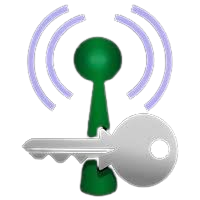WirelessKeyView is a lightweight utility designed to help users retrieve saved Wi-Fi passwords stored on their Windows computers. When a device connects to a wireless network, Windows securely stores the network key, allowing automatic reconnection without requiring the password each time. WirelessKeyView extracts this stored information and displays it in an easy-to-read format, making it useful for users who have forgotten their Wi-Fi credentials.
Many users wonder if WirelessKeyView can be used remotely to recover Wi-Fi passwords from another computer. While the tool is highly effective for local use, it does not have built-in remote access capabilities. However, there are alternative methods to retrieve Wi-Fi passwords remotely, depending on the level of access to the target system.
How WirelessKeyView Works
Overview of WirelessKeyView Functionality
WirelessKeyView is a tool that allows users to recover stored Wi-Fi passwords from a Windows computer. It scans the system and retrieves saved network security keys, making it useful for users who have forgotten their Wi-Fi credentials.
Retrieving Stored Wi-Fi Passwords
- Windows saves Wi-Fi passwords whenever a device connects to a network.
- These passwords are stored in an encrypted format within system files.
- WirelessKeyView decrypts and displays these saved keys in an easy-to-read format.
Accessing Windows Registry Data
- WirelessKeyView extracts Wi-Fi credentials from the Windows registry.
- It looks for stored WEP, WPA, and WPA2 keys under system-managed locations.
- The tool does not require installation and directly reads from registry data to display results.
Can WirelessKeyView Be Used Remotely?
Local Use of WirelessKeyView
WirelessKeyView is specifically designed to retrieve Wi-Fi passwords stored on the local computer where it is executed. The tool scans the system’s registry and extracts saved network keys, making it a useful utility for recovering forgotten passwords.
No Built-in Remote Access Capabilities
- WirelessKeyView does not support remote access to other computers.
- It requires direct execution on the target system to retrieve saved Wi-Fi credentials.
- Unlike remote management tools, it does not have networking features to connect to external devices.
Alternative Ways to Retrieve Wi-Fi Passwords Remotely
Although WirelessKeyView cannot be used remotely, users can consider other methods, such as Remote Desktop (RDP) or PowerShell commands, to access saved Wi-Fi credentials from another device.
Alternative Methods for Remote Wi-Fi Password Recovery
If you need to retrieve Wi-Fi passwords from another computer remotely, WirelessKeyView cannot be used directly. However, there are alternative methods that allow you to access stored network keys from a remote system.
Using Remote Desktop (RDP)
If you have Remote Desktop access (RDP) to the target computer, you can run WirelessKeyView on it as if you were physically present.
Steps to use RDP:
- Connect to the target computer via Remote Desktop Connection.
- Download and run WirelessKeyView on the remote system.
- View and retrieve the saved Wi-Fi passwords.
This method requires admin access and RDP must be enabled on the remote machine.
Using PowerShell Commands
- You can retrieve Wi-Fi passwords remotely using a PowerShell command if you have administrator privileges on the remote computer.
- Command to run on the remote system:
netsh wlan show profile name="WiFiName" key=clearSteps to execute it remotely:
- Open PowerShell with admin rights.
- Use Enter-PSSession -ComputerName to start a remote session.
- Run the netsh command to display the Wi-Fi password.
This method requires that PowerShell Remoting is enabled on the target system.
Retrieving Wi-Fi Passwords from Cloud Sync (Microsoft Account)
If both devices use the same Microsoft account, Wi-Fi passwords might sync automatically.
Windows allows Wi-Fi profile synchronization across trusted devices, meaning saved passwords may be available on another PC.
Steps to check:
- Log into a Windows device using the same Microsoft account.
- Go to Network & Internet settings > Wi-Fi > Manage known networks.
- View saved Wi-Fi profiles.
This method depends on whether the sync feature was enabled on the target system.
Ethical and Legal Considerations
When retrieving Wi-Fi passwords, it is crucial to follow ethical guidelines and legal regulations. Unauthorized access to network credentials can lead to serious consequences, including legal penalties.
Unauthorized Access is Illegal
- Accessing another person’s or organization’s Wi-Fi passwords without permission violates privacy laws and cybersecurity regulations in many countries.
- Unauthorized retrieval of network credentials can be considered hacking or unauthorized access to a computer system, which may result in fines, legal action, or imprisonment.
- Many businesses and institutions have strict policies against unauthorized access to network credentials.
Use WirelessKeyView Only on Authorized Systems
- WirelessKeyView should only be used on your own devices or systems where you have explicit permission from the owner.
- If you need to recover a Wi-Fi password for a workplace or shared network, always seek proper authorization from the network administrator.
- Ethical use of such tools ensures compliance with the law and helps maintain cybersecurity integrity.
Conclusion
Conclusion, WirelessKeyView is a useful tool for recovering saved Wi-Fi passwords on a local computer, but it lacks built-in remote access capabilities. While it can help users retrieve forgotten credentials, it should only be used on devices they own or have permission to access. Attempting to recover passwords from another system without authorization is both unethical and illegal, potentially leading to serious legal consequences.
For remote Wi-Fi password recovery, alternative methods such as Remote Desktop (RDP), PowerShell commands, or Microsoft account sync can be used, provided the user has proper permissions. Always ensure compliance with legal and ethical guidelines when handling network credentials.
